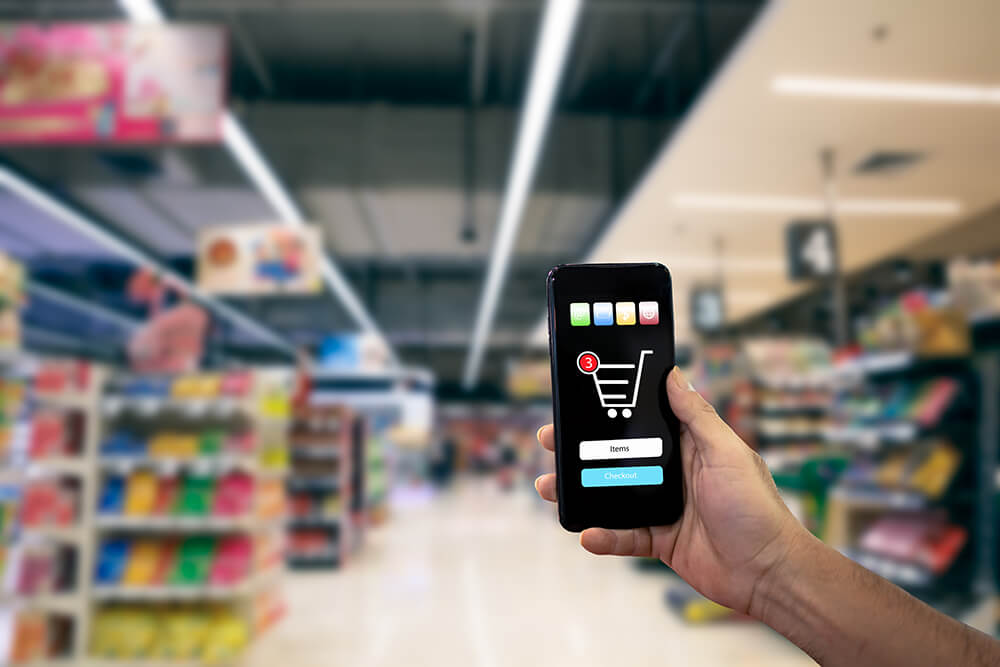A faster way to develop new retail services
Fujitsu / December 24, 2021
As our shopping habits continue to evolve, Yasumasa Oshiro, Software Development Manager at Fujitsu, looks at how retailers can accelerate the development of new services to stay ahead of competition.
Our changing shopping habits
Did you try out different ways of shopping during the pandemic?
Many people have sensibly opted for online shopping with home delivery to avoid crowded spaces. So many that the sheer difficulty of getting a delivery slot encouraged many others to try out click and collect, or what’s called BOPIS – Buy Online Pickup in Store - for the first time.
And it seems we have not gone back. Forty-five percent of US consumers say they still shop more for groceries online now compared with before the pandemic, with 46% of online shoppers using online delivery more and 40% using online pickup more. These are now regular habits for large sections of the population.
It appears the pandemic has jolted many of us out of our established ways of purchasing. Take eating out, for example. Kiosk or online ordering – not just in fast food restaurants but for upmarket dining too – has become widespread. And rapid delivery to your door of just about anything is now available if you can’t wait for the weekly online delivery slot you booked for later this week. Do you need noodles now? No problem – one-hour or faster home delivery services are now standard. You can now get pretty much anything delivered to your door, thanks to partnerships with firms like Uber Eats and Deliveroo, plus tier-one retailers’ offerings such as Tesco’s Whoosh in the UK.
What about lining up to pay? One day – soon, I suspect – people will just smile when they remember when we lined up patiently to pay for purchases.
Indeed, cashier-less stores now exist and every tier-one retailer has been trialing it in their HQs. Get ready for significantly higher visibility of cashier-less, not just in stores, but wherever peak purchasing congestion justifies the switch – rail stations, sports stadia, canteens, city center sandwich outlets.

A faster way of innovating
The possibilities are exciting but integrating all this technology is a challenge. As the options available to customers expand – kiosks, online, mobile apps, in-store – so does the complexity of hooking everything up to back-end systems to grab prices, product images and stock availability.
With so much happening at once – and so much at stake – retailers are paying much more attention to integrating front- and back-end systems.
Fujitsu is focused on Micro Service Architecture (MSA), which is exceptionally well-suited to the task. It is not a new approach – a good thing when core retail operations are involved – and has been widely adopted over several years for cloud-native applications, serverless computing, and applications using lightweight containers.
MSA is a stable, low-risk option for retailers with a solid pedigree behind it. It arranges applications as a collection of loosely coupled services, each aligned closely with a specific business activity, for example, the cart or the payment gateway. As a result, MSA has a lightweight code footprint, enabling DevOps teams to create and activate services independently.
What makes that possible is coding each service independently of the surrounding services, so one does not force changes on to the others. That clears a path for rapid evolution of services as needs change and new possibilities open up.
While it’s low-risk and agile, it’s an approach that rests heavily on integration experience with public APIs – both in existing services and any new ones you create – to ensure the decoupling remains durable as systems grow in complexity. Larger retailers also require global expertise to conform to multiple language requirements and fiscal compliance regulations, such as tax.

The smartphone is now at the heart of retail
Today, the smartphone is increasingly at the heart of the user experience for customers and employees. I’ll run through three examples to show how this works in practice.
The first example is queue-free shopping. While most of the attention here has been on cashier-less stores, this is not a model that suits all retail customers. MSA is the recommended solution when retailers want to make back-end operations as easy and exciting as the front end of their business. Additional benefits include the stability that MSA brings to the IT infrastructure.
Fujitsu is working with U.S.M. Holdings, leveraging MSA and open APIs, on another way to achieve frictionless shopping but at a much more economical investment level. It is a walk-through checkout. The system recognizes a customer is in your store either by scanning a QR code with a smartphone to check-in, or from GPS data. The customer – who will have previously registered a payment card - selects items to buy and scans the bar codes to the phone. When they finish shopping, they scan a QR code and walk out. Payment is automatic with no standing in line at a checkout.
In example two, the same MSA/Open API approach also works for online shopping. Using a retailer’s mobile app, customers select local stores identified by their location. The system connects to an auto-promotion engine that offers relevant discounts or loyalty points, puts the items in the cart and handles the payment. The app allows multiple fulfillment options, either delivered to your home or a BOPIS option.
Final example: When it comes to improving store or warehouse efficiency, retailers are struggling to overcome current labor recruitment challenges, such as delivery drivers and order pickers. Maximizing the efficiency of your current labor resource is a top priority and technology can help, although many tier-two retailers lack capability here.
BOPIS or home delivery orders are allocated to a picker on a smartphone app. The picker gets the itemized order and information on where to find it, saving time. The app can also prioritize what products or categories to pick, for example, delaying picking frozen items to the last. An alternative in-stock SKU is provided for any out-of-stocks.
In each of these examples, the key is to arrange each capability as discrete microservices that can be linked to others via open APIs, for example, merchandise lookup or loyalty points data.
If this is an approach that would increase the agility of your innovation programs, you can learn more on www.fujitsu.com/retail.

The future of retail is Open

Yasu is responsible for Fujitsu’s global retail portfolio and roadmap, which includes prioritizing markets, building the case internally and with partners for new solution development, and executing specific growth initiatives.
Editor's Picks






